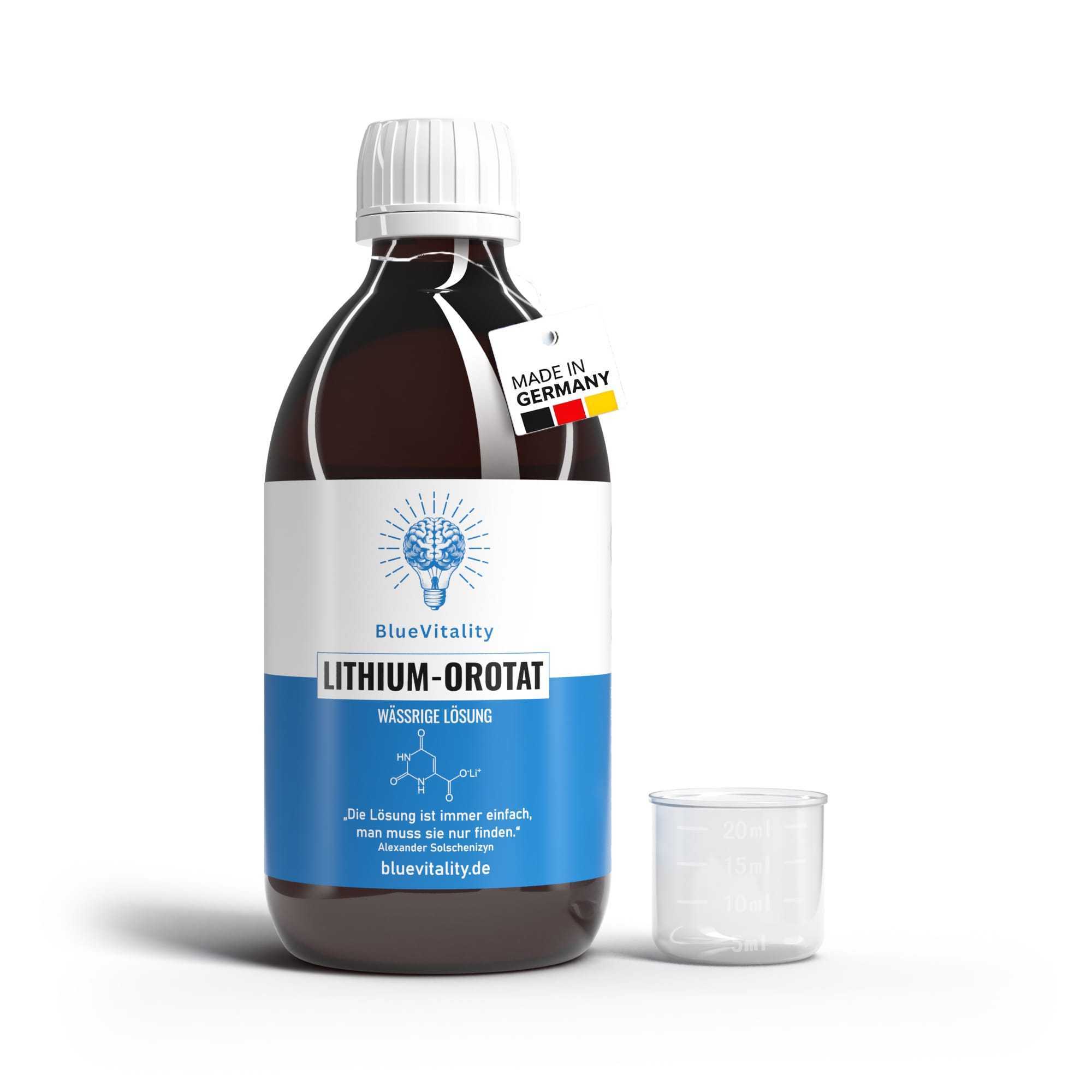Methylene blue: A versatile tool for research
Although methylene blue was discovered centuries ago, its significance in research is far from exhausted. On the contrary, this molecule has proven itself as a versatile tool in a wide variety of research areas and is now an indispensable component of scientific research. Cell biology about the neurology to medicine, this molecule an impressive range of applications that make it an indispensable part of research.
Methylene blue in cell biology: vital staining and cellular process investigation
It plays a crucial role in the Cell biology and is often used as a vital stain to visualize living cells under the microscope. This technique allows researchers to study the structure and function of cells in real time and gain important insights into cellular processes.
Vital staining of cells
The vital staining with Methylene blue is based on its ability to selectively bind to certain cell structures. It interacts with biological molecules such as nucleic acids , proteins and lipids , making these structures visible under the microscope. This allows researchers to stain living cells and study their Investigate morphology , movement and interaction with other cells or surrounding structures.
Investigation of cellular processes
By vital staining with Methylene blue researchers can study a variety of cellular processes. One important application is the observation of cell division, where methylene blue is used to Chromosomes during the Mitosis or meiosis to color and the dynamics of the cell cycle Furthermore, methylene blue enables the investigation of Endocytosis - and Exocytosis processes , in which cells take up or release substances, as well as the study of cell movements and migration.
Application in research
The use of Methylene blue in cell biology has led to numerous scientific discoveries and made important contributions to the study of cell structure and function. It is used in various areas of biomedical research, from basic to applied research. Researchers use it to investigate the effects of diseases, drugs, and environmental factors on cells and to develop new therapeutic approaches.
It is an indispensable tool in cell biology, allowing researchers to examine living cells under the microscope and gain important insights into cellular processes. Through its ability to perform vital staining and study cellular processes, it has made significant contributions to the study of cell structure and function and remains an important component of biomedical research.
Methylene blue in neurobiology: modulation of neuronal activities and treatment of neurodegeneration
It plays a crucial role in neurobiology and is increasingly viewed as a promising tool for studying neuronal activity and treating neurodegenerative diseases. The unique neuroprotective properties of methylene blue have attracted the interest of researchers and opened up new perspectives for the development of therapies for diseases such as Alzheimer's , Parkinson and Amyotrophic lateral sclerosis opened.
Modulation of neuronal activities
In neurobiology, it is actively used as a modulator of neuronal activities. Methylene blue has been shown to mitochondrial Function improved, resulting in an increase in energy production in Neurons and increases cell survival. Furthermore, it can reduce the formation and accumulation of abnormal protein deposits in the brain, which plays an important role in the development of therapies for neurodegenerative diseases.
Treatment of neurodegeneration
The neuroprotective properties of methylene blue make it a promising candidate for the treatment of neurodegeneration. Researchers are intensively investigating its effects on various neurodegenerative diseases such as Alzheimer's, Parkinson's, and amyotrophic lateral sclerosis. It has been shown to slow the progression of these diseases and alleviate symptoms by improving mitochondrial function, reducing the formation of harmful protein deposits, and increasing neuronal survival.
Application in research
It is used in neurobiological research for a variety of applications. It serves not only as a tool for studying neuronal activity but also for developing new therapies for neurodegenerative diseases. Researchers use it to Pathophysiology of these diseases, new Biomarkers to identify and develop innovative treatment approaches.
It is a promising agent in neurobiology, enabling the modulation of neuronal activity and the treatment of neurodegenerative diseases. Through its neuroprotective properties, it has the potential to revolutionize the treatment of diseases such as Alzheimer's, Parkinson's, and amyotrophic lateral sclerosis, improving the quality of life for millions of people. Researchers around the world are working to understand the full potential of methylene blue and advance its application in clinical practice.
Methylene blue in biotechnology: Application in DNA staining techniques and enzyme activity assays
It has proven extremely useful in biotechnology and is widely used in various applications, including DNA staining techniques and enzyme activity assays. This versatile compound has numerous applications in biological research, enabling important experiments and analyses.
DNA staining techniques
In DNA staining it is often used to Nucleic acids , in particular DNA , to stain and visualize it under the microscope. It binds selectively to the DNA double helix, allowing researchers to study the concentration, integrity, and distribution of DNA in samples. It is particularly useful in visualizing DNA bands in agarose gel electrophoresis, a standard procedure in molecular biology for separating and analyzing DNA fragments.
Enzyme activity assays
It is also used in enzyme activity assays to measure the activity and stability of enzymes. It serves as a substrate or indicator for enzymatic reactions and allows researchers to quantify the concentration and activity of enzymes in a sample. These assays are crucial for studying enzyme functions, identifying inhibitors or activators, and developing new therapeutic approaches.
Application in biotechnology
The use of methylene blue in biotechnology has led to numerous scientific discoveries and important contributions to the study of DNA structure and function as well as to the characterization of enzymes It is used in various areas of biological research, from basic science to applied biotechnology. Researchers use it to study the dynamics of DNA replication and transcription, develop DNA markers, and analyze enzyme activities.
It is an indispensable tool in biotechnology, enabling researchers to conduct important experiments and analyses. Through its application in DNA staining techniques and enzyme activity assays, it has made significant contributions to the study of DNA structure and function, as well as to the characterization of enzymes. Researchers around the world use it to gain new insights and develop innovative solutions in biological research.
Methylene blue in environmental research: analysis of water samples and investigation of environmental pollution
It plays an important role in environmental research and is widely used for analyzing water samples and investigating environmental pollution. Its unique chemical properties make it a valuable tool for detecting and quantifying pollutants in the environment.
Analysis of water samples
In environmental research Methylene blue Commonly used to analyze water samples. It serves as an indicator for various pollutants such as organic compounds, heavy metals, and other toxic substances. By adding methylene blue to water samples and then analyzing them, researchers can determine the concentration and type of pollutants, thus gaining important information about water quality and environmental pollution.
Investigation of environmental pollution
It is also used to study environmental pollution. Due to its ability to interact with a wide variety of pollutants, Methylene blue serve as an indicator of environmental pollution and help researchers study the sources, effects, and distribution of pollutants in the environment. This enables the development of effective measures to reduce and control pollution and protect environmental health.
Application in environmental research
The use of Methylene blue in environmental research has led to important insights into environmental pollution and contributed to improving water quality and environmental health. It is used in various areas of environmental research, from monitoring drinking water sources to examining water bodies, soils, and air samples. Researchers use it to understand the impacts of human activities on the environment and develop sustainable solutions to reduce environmental pollution.
It is an indispensable tool in environmental research, allowing researchers to analyze water quality and investigate environmental pollution. Through its application in water sample analysis and pollution investigation, it has made significant contributions to protecting environmental health and helping to understand the impacts of human activities on the environment and develop sustainable solutions.
Conclusion: Methylene blue - An indispensable tool for scientific research
It has established itself as an indispensable tool for scientific research and is widely used in various disciplines. From cell biology and neurobiology to biotechnology and environmental research, methylene blue contributes to groundbreaking discoveries and deepens our understanding of complex biological and chemical processes.
Versatile applications in various disciplines
It is used in a wide variety of scientific disciplines and has numerous applications. In cell biology, it serves as a vital stain to visualize living cells under the microscope and to study cellular processes. In neurobiology, it modulates neuronal activity and offers new approaches to the treatment of neurodegeneration. In biotechnology, it is used for DNA staining and enzyme activity assays, while in environmental research it is used to analyze water samples and investigate environmental pollution.
Contribution to groundbreaking discoveries
It has contributed significantly to groundbreaking discoveries in scientific research. It has helped researchers decipher complex biological and chemical processes, understand disease mechanisms, and develop new therapeutic approaches. Through its versatile applications, Methylene blue has made a significant contribution to the advancement of science and will continue to play an important role in the future.
outlook
Overall, Methylene blue An indispensable tool for scientific research with broad application across various disciplines. Its versatile applications and unique chemical properties make it an essential component of scientific progress. Researchers around the world use methylene blue to gain new insights, drive innovation, and find solutions to complex scientific challenges.





